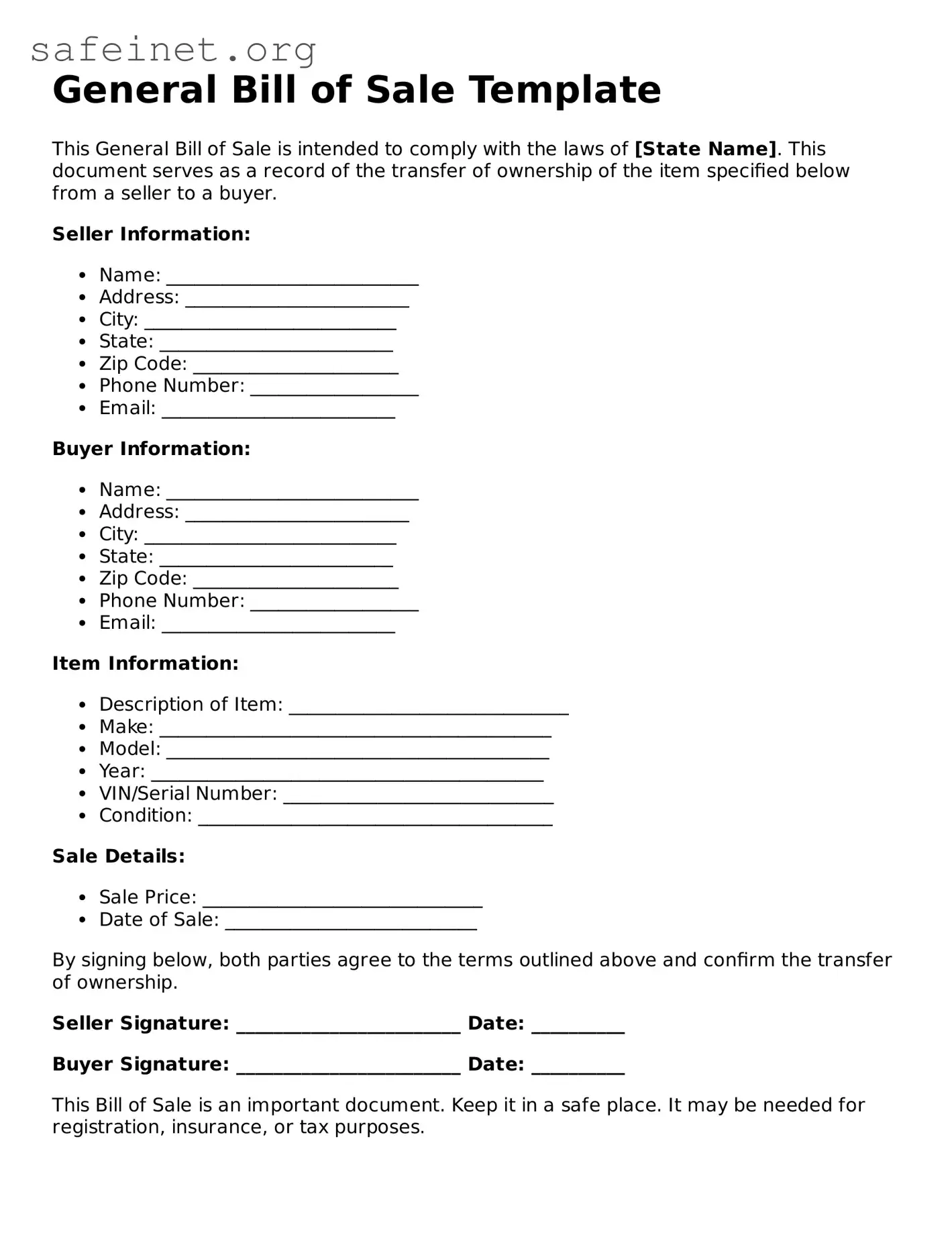A General Bill of Sale serves as a crucial legal document that provides proof of transfer of ownership of personal property from one party to another. Similarly, a Vehicle Bill of Sale captures the specifics involved in the sale of a vehicle. This document typically outlines the vehicle's make, model, year, and VIN, along with the buyer and seller's information. It serves not only as proof of sale but also as an essential tool for vehicle registration and title transfer.
The Equipment Bill of Sale functions similarly in that it documents the sale of heavy machinery or equipment. This form includes detailed descriptions of the items being sold, including their condition and any warranties that may apply. It guarantees that both the seller and buyer have a clear, mutual understanding regarding the transaction concerning commercial equipment.
A Boat Bill of Sale serves a purpose akin to that of a General Bill of Sale but is specifically tailored for the transfer of ownership of watercraft. It addresses the unique aspects of boat ownership, such as registration, hull identification numbers, and any outstanding liens. This document reassures the buyer that they are acquiring a legally transferable asset and protects the seller from future claims.
The Firearm Bill of Sale is another important document that parallels the General Bill of Sale. This explicit form lists the firearm’s make, model, and serial number, ensuring that all legal requirements for sale and transfer of firearms are met. It helps to prevent illegal transactions and keeps records of firearm ownership, which can be crucial for law enforcement agencies.
Art and Collectibles Bill of Sale offers a tailored solution for the transfer of valuable items like artwork, antiques, or collectibles. This document typically includes the provenance of the item, its condition, and any appraisals that may have been conducted. For buyers and sellers in the art market, this type of Bill of Sale provides assurance and clarity regarding the ownership and authenticity of unique items.
In the realm of real estate, a Personal Property Bill of Sale can also be used to document the sale of personal property that isn't fixed to a location, such as appliances or furniture within a home. This document complements property transfer documents by specifying what items are included in the sale of real estate, thereby avoiding disputes at closing.
A Lease-to-Own Agreement parallels the concept of a Bill of Sale by allowing buyers to make payments over time with an option to purchase the property at the end of the lease term. This agreement outlines the terms of the lease, the final purchase price, and any payment conditions. It serves both the seller and buyer by creating a path to ownership through gradual investment.
Finally, a Warranty Deed, while often related to real estate transactions, is similar in function to a General Bill of Sale in that it guarantees the seller’s right to transfer ownership and provides assurances regarding the title. This document ensures that the buyer receives clear title to the property without any encumbrances, paralleling the protective aspects of a Bill of Sale in personal property transactions.
